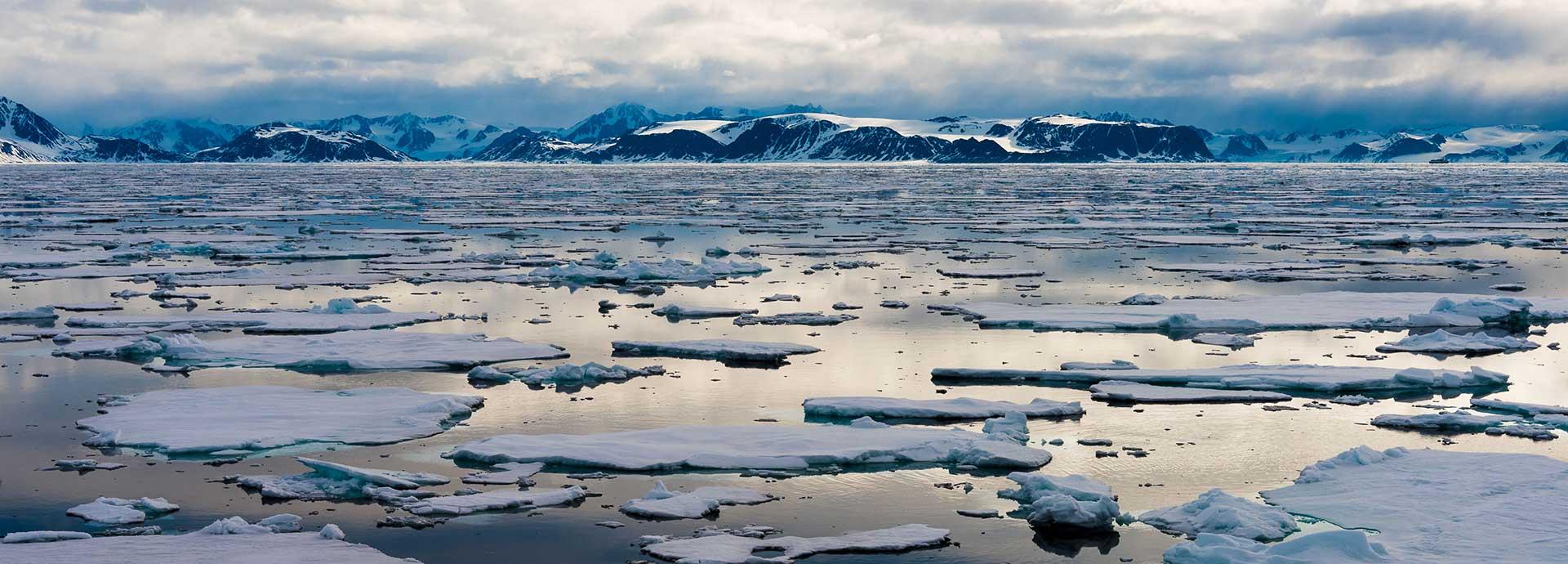

There used to be only one way to sail from East Asia to Europe – an arduous passage across the Indian Ocean and around the bottom of Africa. The opening of the Suez Canal at the end of the 19th century saved sailors thousands of miles and weeks afloat. Now, a new route through the Russian Arctic promises another shortcut. Russia hopes to make the Northern Sea Route useable year-round. Doing so will allow goods to be moved between continents faster than ever before. It also creates a host of new challenges, both for companies who want to use the route and for the fragile Arctic ecosystem.
The Northern Sea Route (NSR) stretches 5,500 kilometres along the Russian Arctic coast, from the Novaya Zemlya archipelago, past Siberia, to the Bering Strait between Russia and Alaska. For centuries, thick ice made it impassable for much of the year. In the last decade, however, rising temperatures have thawed the ice enough to make sailing the route possible for a few months every summer, and the ice-free period is increasing every year. Russian President Vladimir Putin has said that by 2024, he wants shipping traffic along the route to reach 80 million tons annually – four times the amount in 2018.
Russia has spent billions upgrading its facilities along the Arctic coast and has introduced legislation granting Rosatom, the state’s nuclear power company, exclusive control over the infrastructure needed to access the NSR year-round. These investments ensure it has oversight of ships transiting the NSR.
Ensuring seaworthiness
Russia’s control over the route means that companies who use it must abide by the rules the country sets as well as pay any transit fees it decides to charge. Additionally, not every ship is equipped to make the transit.
Evgeniy Ambrosov, Senior Executive Vice-President of the Russian state-owned shipping conglomerate Sovcomflot, says: “Vessels travelling along the NSR have to have an ice-class, with stronger hulls and special navigation equipment.”
If ships are not ice-class, he says, they can only operate independently in ice-free waters. In addition, several types of vessels, such as oil tankers, gas carriers, and chemical carriers of certain tonnage, are not allowed to move on their own even in ice-free waters if they have no ice class – they must be accompanied by icebreaker ships and even then, they are permitted to only enter the NSR from July to mid-November.
It is not just the ships that must be prepared; crews also have to be prepared for the unique challenges the environment presents.
The right crew for the job
“It is impossible to overstate how important it is to prevent sub-standard vessels and vessels manned by inexperienced and poorly qualified crews from operating in the Arctic,” Ambrosov says. “All ships operating in the Arctic should have a bridge team certified in full accordance with Chapter 12 of the Polar Code [the international framework for ships operating in polar waters], to confirm they are adequately qualified, trained and experienced.”
Teus van Beek, General Manager, Ecosystem Innovation at Wärtsilä, reiterates the importance of having crews who know how to navigate through icy waters. “It’s always uncertain because you never know how thick the ice is, you don’t know how strong it is,” van Beek says.
Arctic crews can command higher wages because their training is invaluable when it comes to adapting to difficult, changing conditions and responding to problems.
For companies and ship owners willing to invest in both qualified crews and ships, the NSR is almost certain to bring rewards. In a cost analysis of the route, researchers in Japan found that it reduced the sailing distance between East Asia and Northwest Europe by 40%, compared with travelling by the Suez Canal.
The big payoff
Shorter distances for shipping aren’t the only potential benefit being opened up by the NSR.
“This route unlocks the Arctic with its huge trove of mineral resources, such as gas, oil, metals and coal. Without the NSR, many of these deposits are almost inaccessible,” says Ambrosov.
As the route becomes more widely used, and projects to exploit these natural resources increase, shipping in the region is expected to grow, according to Anu Fredrikson, Director of the Arctic Economic Council.
“Further investment, such as Novatek’s Arctic LNG 2 [a natural gas project from Russia’s second-largest supplier] will contribute to the expected rise of Arctic transport volumes to 100 million tonnes by 2030,” she says.
Sailing through a fragile ecosystem
As the Arctic opens up further to shipping and development, close attention must be paid to the region’s unique ecosystem. The Arctic effectively acts as a global refrigerator, giving off more heat than it absorbs. Increased pollution in the region will accelerate the rate at which it heats up, contributing to climate change overall.
“You need to think about emission levels, because the area is much more sensitive, and the whole world depends on it,” van Beek says.
Companies planning to use the route for shipping need to be conscious of reducing emissions through the use of the cleanest possible fuels, such as LNG and effective energy storage. For instance, Sovcomflot’s Aframax type crude oil tanker uses LNG as the main fuel, and recently completed a voyage from Murmansk to China through the NSR without any icebreaker assistance. Technology also can help with monitoring the safety and efficiency of ships, crews, and equipment.
Such investments will increase the amount of time before profits are realised but will also ensure that the benefits of the NSR can be gleaned for many years to come.


